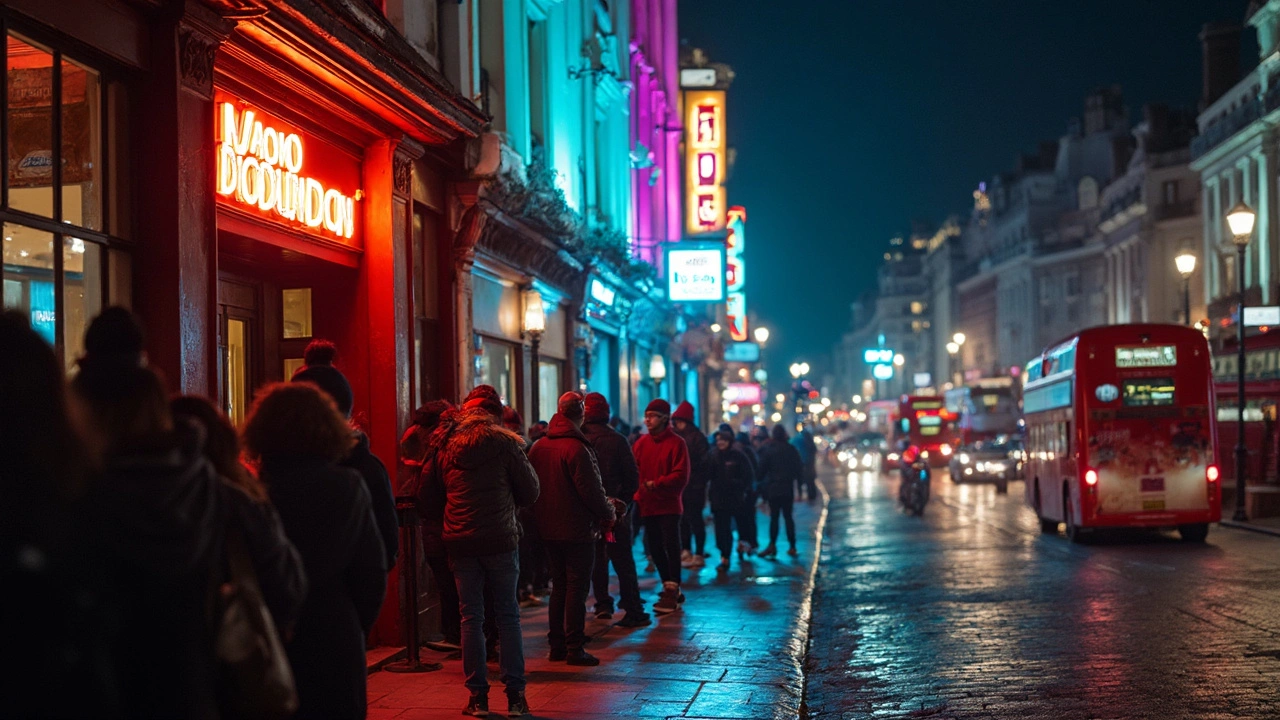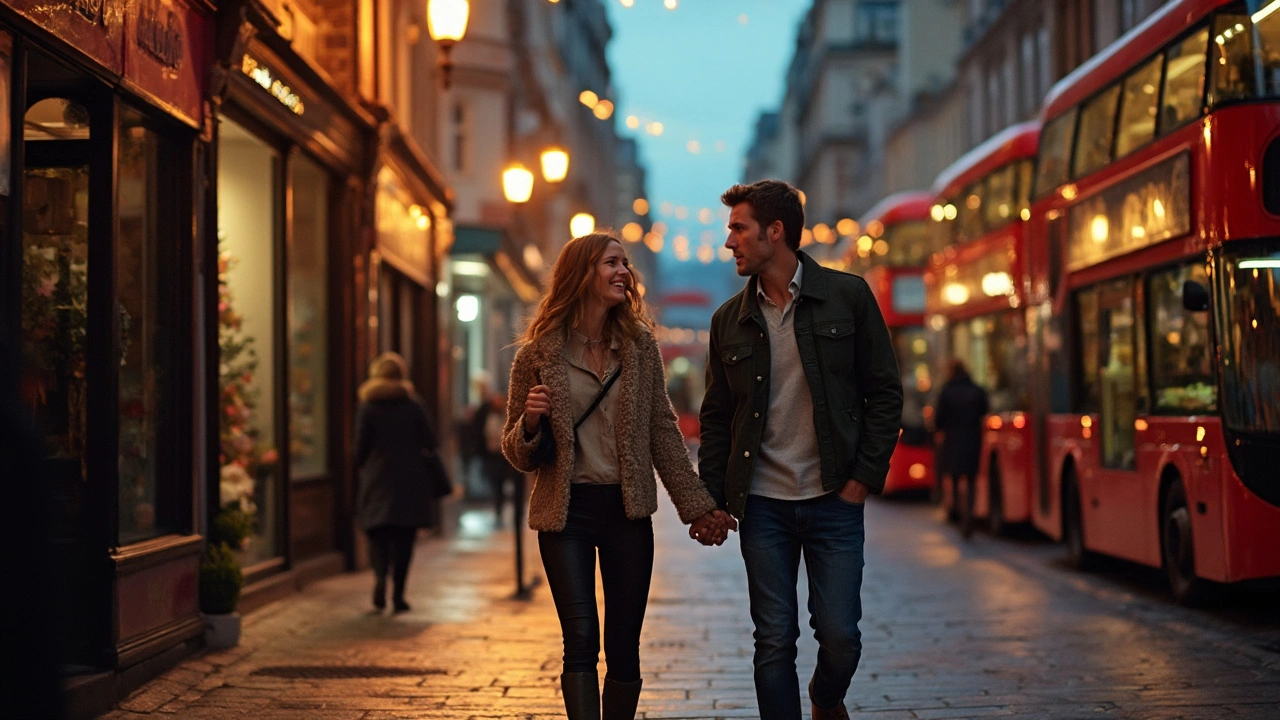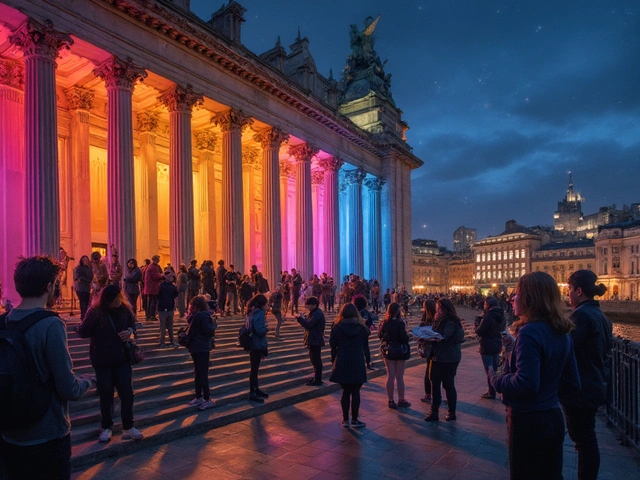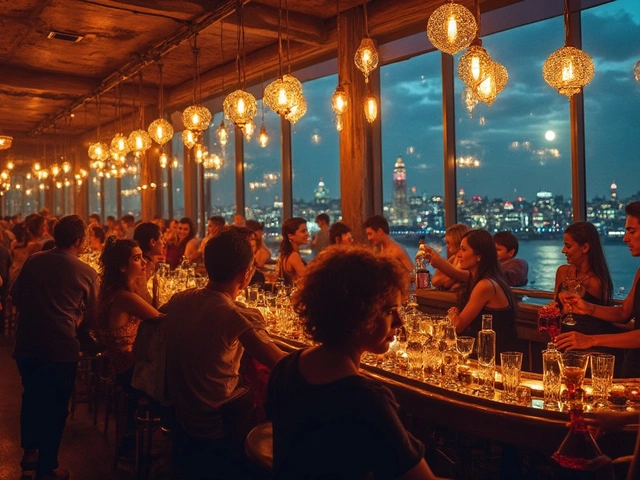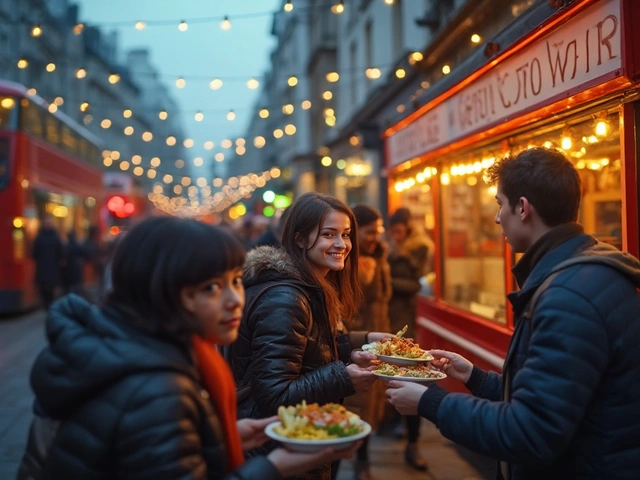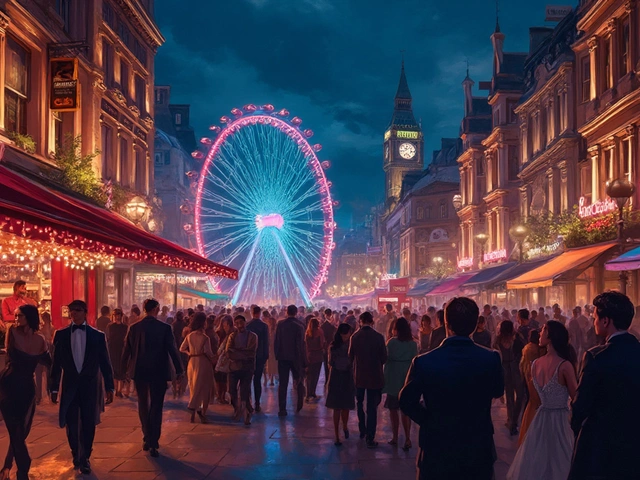
Feeling the itch to dance but not sure where the real party starts in London? Forget scrolling endlessly through Instagram—here’s what you need to know if you want to turn an average night into a story worth telling.
London is stacked with famous nightclubs that aren’t just about loud music and neon lights. Each spot comes with its own rules, vibe, and crowd. Some places are all about wild dancing; others care more about keeping things cool and exclusive. The trick? Knowing which club matches your personality and your plans for the night.
Dress codes in London can be strict—especially in the trendier West End. Don’t risk getting turned away at the door. Going casual? Stick to Shoreditch or Peckham. Chasing VIP glam? Mayfair and Soho are your playgrounds, but bring your best shoes (and your patience for velvet ropes).
Tip: Friday and Saturday nights hit peak energy, but also bring monster queues. If you hate waiting, look for clubs with ticketed entry or guest lists you can join online. And yes, most clubs check your ID, even if you’re rocking serious grown-up energy, so don’t leave it at home!
- Quick Highlights for London Clubbing
- Fast Facts: What’s the London Nightclub Scene Like?
- Why London’s Dance Clubs Are a Must-Try
- Types of Clubs: From Iconic to Underground
- How to Get In: Finding the Right Club for You
- Pro Tips: Making the Most of Your London Night Out
Quick Highlights for London Clubbing
Before you pick your outfit and scan your map, here are some need-to-know facts for a proper night out in the heart of the city. London’s club scene isn’t just big—it’s stacked with options that range from sweaty dancefloors in converted warehouses to ultra-glam rooftop bars with views over the whole skyline.
- Best clubs London are usually open until at least 3am, with some hotspots like Fabric and Ministry of Sound keeping the party going until 6am on weekends.
- Most clubs enforce a minimum age of 18. Big nights mean strict door checks, so always bring valid photo ID.
- Dress codes can vary a lot. In Mayfair and Soho, trainers and sportswear are a no-go. Over in East London? Pretty much anything goes, but keep it tidy.
- Entry price jumps with popularity. Expect to pay about £10–£30 at the door, while headline DJ nights can push tickets above £40.
- Major clubs offer advance ticket sales online and discounted early bird tickets. Saves you money and can skip the line on busy nights.
Getting around is easier than you think—even at 2am. London has 24-hour buses and some tube lines run all night on Fridays and Saturdays (the "Night Tube").
| Club | Location | Music Style | Entry Price | Last Entry |
|---|---|---|---|---|
| Fabric | Clerkenwell | Techno, House | £20–£25 | 3am |
| Ministry of Sound | Elephant & Castle | Electronic, Chart, House | £15–£30 | 1:30am |
| XOYO | Shoreditch | Drum & Bass, House, Hip Hop | £10–£20 | 2am |
| Cargo | Shoreditch | R&B, Hip Hop, Pop | £10–£15 | 2am |
| Tiger Tiger | Piccadilly Circus | Pop, Dance, Commercial | £10–£20 | 2am |
Most venues sell out for big acts—book in advance if you have your heart set on one place. For spontaneous nights, try smaller venues or bar-club hybrids around Dalston, Camden, or Brixton; you’ll pay less and might just stumble into a new favorite.
Fast Facts: What’s the London Nightclub Scene Like?
London is a real powerhouse when it comes to clubbing. You’ll find over 300 licensed nightclubs dotted around the city, offering everything from giant venues with LED walls to underground basements packed with vinyl DJs. The vibe depends on where you go, but expect doors to open around 10 pm and the last song to blast until 4 or 5 in the morning—especially on weekends.
Music? There’s something for everyone. House, techno, hip hop, afrobeats, pop anthems—you name it, there’s a dancefloor for it. Big names like Fabric, Ministry of Sound, and XOYO often pull in top DJs and international crowds. Smaller local gems like Corsica Studios or Dalston Superstore focus on new talent and seriously good tunes. Some clubs also rotate themes, so one Friday might scream disco, while the next goes full-on drum and bass.
- The legal clubbing age is 18. No exceptions, and yes—they actually check.
- Bouncers won’t let you in without a valid photo ID, even if you look ancient.
- Busy nights mean heavier security, so bag checks are standard.
- Some venues, especially in Mayfair and Soho, have a strict guestlist—book ahead if you don’t want to queue forever.
Not sure which area suits you? Central London’s West End is flashy and classic, while East London (think Shoreditch, Dalston) keeps things edgy and experimental. Peckham is another local favourite if you like rooftop views with your beats. And a heads-up: drinks aren’t cheap, especially in central locations.
| Top London Club | Capacity | Typical Genre | Closing Time |
|---|---|---|---|
| Fabric | ~1,600 | House/Techno | 8am (weekends) |
| Ministry of Sound | ~1,600 | Electronic/Dance | 6am |
| XOYO | ~800 | Varied (live & DJs) | 4am |
| Corsica Studios | ~500 | Underground/Eclectic | 3am |
London clubs work hard to keep the atmosphere safe and fun. Look for clearly marked help points, regular security patrols, and plenty of water stations—especially at the best clubs London has to offer. Still, stick with your mates, and always plan your late-night ride home.
Why London’s Dance Clubs Are a Must-Try
If you’re wondering why everyone makes such a big deal about going out in London, here’s what’s up. London’s dance clubs aren’t just spaces—they’re experiences. You get everything from world-class DJs to acts that break the Internet. Every weekend, hundreds of thousands hit the city’s London clubs, turning the night into something that feels electric and a little bit unpredictable.
What makes these places special? First off, variety. Whether you want giant superclubs like Ministry of Sound with its thundering bass and lasers, or you’re after tiny basement spots in Dalston where the playlists are handpicked by whoever’s behind the decks, London covers all the bases. The city is famous for mixing fresh trends with classic vibes. Clubs like Fabric, for example, are known the world over—you’ll spot travelers who’ve flown in just for the night.
But it’s not just about the DJs or the decor. Clubs here are built for all types. LGBTQ+ venues like Heaven put on drag shows and high-energy pop nights—a staple for night owls and newcomers. You see proper diversity in both music styles and crowd, which just doesn’t happen everywhere.
Curious about just how big the scene is? Here’s a quick look at the numbers:
| Club Name | Location | Average Attendance (per week) | Type |
|---|---|---|---|
| Ministry of Sound | Elephant & Castle | ~9,500 | Superclub |
| Fabric | Farringdon | ~7,000 | Electronic/Underground |
| Heaven | Charing Cross | ~4,500 | LGBTQ+ |
| XOYO | Shoreditch | ~3,800 | House/Indie |
London nightclubs have help launch artists who are now global sensations—Calvin Harris, Disclosure, even Dua Lipa first played to London crowds. And most places stay open until at least 3am, some until sunrise, so you’re not rushing fun for an early last call.
They’re not cheap, but here’s why people happily splash out—top-notch sound systems, big-name lineups, and crowds that actually want to dance rather than just pose for photos. Londoners love a proper party, and you’ll vibe off that energy from the first beat.
Types of Clubs: From Iconic to Underground
London’s club scene is a mix of legendary spots everyone talks about and underground gems only locals seem to know. Knowing what you want—big-name DJs, sweaty all-night dancing, or just killer people-watching—helps you land at the right spot.
Let’s break it down:
- Iconic clubs like Fabric in Farringdon or Ministry of Sound in Elephant & Castle are practically tourist attractions at this point. Fabric is famous for its pounding sound system, diverse lineups, and a main room dance floor with a bounce that makes your knees wobble (yes, it’s meant to do that). Ministry of Sound brings big EDM nights, foam parties, and a global reputation—if you want the classic London nightclub experience, this is it.
- If you’re serious about electronic music, Printworks in Canada Water used to be the talk of the town—a massive industrial space with insane visuals—but closed in 2024. Phonox in Brixton steps up with curated DJ nights and a no-fuss vibe. Unlike bigger clubs, it keeps the focus on music, not VIP tables.
- For those after the underground scene, head to places like Corsica Studios in Elephant & Castle. It’s more about proper dancing and less about flashy bottles. The crowd’s there for techno, experimental beats, and a relaxed, open-minded atmosphere.
- Into house parties and secret events? Look for warehouse raves in East London, especially Hackney and Dalston. These nights are announced last-minute, often via social media. Unpredictable locations, rotating artists, and, yes, the occasional ‘bring your own drinks’ situation.
- Queer and inclusive clubbing is a big London strength. Dalston Superstore and Heaven near Charing Cross are famous for drag shows, wild dance floors, and weekend-long celebrations. These places give you freedom to be yourself—judgement-free fun with an always friendly crowd.
Don’t forget the members-only clubs. Places like The Box Soho mix cabaret acts with outrageous late-night performances. You’ll need to “know someone” or cough up big on guest lists. If you’re just in it for the music and crowd, though, public clubs have way less hassle.
How to Get In: Finding the Right Club for You
So, you want the perfect London club night—but how do you actually get through the door? The biggest thing to know is that not every club works the same way. Picking the right spot saves you time, money, and a lot of frustration at the entrance.
Start by asking yourself: what kind of night do you want? Are you after legendary house DJs at Ministry of Sound, wild drag shows at Heaven, a posh rooftop bar at The Curtain, or underground techno in Dalston? Each area has its own vibe. Soho and Mayfair serve up exclusive, high-energy crowds, while Shoreditch and Peckham keep things relaxed and creative. Know your scene and you’ll fit right in.
Here’s what makes getting in easier:
- Best clubs London tend to have strict guest lists. If it’s a famous spot like Fabric or XOYO, buy your ticket in advance online. Sometimes, entry lines split for ticket holders and walk-ups—the ticket line moves faster almost every time.
- Look for guest list options. Many clubs let you sign up on their website. It’s quick, free (most of the time), and guarantees you don’t waste your night waiting or worse, getting rejected.
- Dress codes are real. Don’t show up in sportswear unless the event says it’s okay. Trainers are hit-or-miss—some places say yes, others will turn you away. When in doubt, dress smart but comfortable.
- Be over 18 (obviously), but don’t forget your ID no matter how old you are. London clubs are strict with age checks, even for folks who feel ancient enough to have invented disco.
- Travel in small groups if you can. Large groups of lads or big hen parties sometimes get split up or denied entry, especially at more exclusive venues.
If you’re looking for more niche or local vibes, keep an eye on promoters’ Instagram pages and Facebook events. Upcoming pop-up parties and secret raves often post last-minute door codes or event details there. The best nights sometimes hide in plain sight.
And here’s a classic London hack: earlier is better. Most places hate letting in big crowds all at once close to midnight. Arrive before 11pm—sometimes you’ll even pay less before midnight.
It’s not just about showing up; it’s about choosing a club that matches your energy, booking ahead, and being prepared. Saves drama, and lets you focus on having a killer night out.
Pro Tips: Making the Most of Your London Night Out
Let’s talk about squeezing every last drop of fun (and sanity) from your London clubbing experience. This isn’t just about staying out late—it’s about making the night memorable and avoiding rookie mistakes.
- Best clubs London usually fill up fast by midnight, so arriving before 11 PM gives you way better entry odds—and sometimes a cheaper cover.
- Most big-name spots use cashless payments now. Make sure your card or phone works in the UK, or you could end up thirsty while everyone else is ordering rounds.
- London transport runs late on weekends (the Night Tube's your friend), but always check last train times. Don’t get stuck with pricey cabs or late-night bus adventures unless you really want one.
- Bag checks at club doors are serious. Leave toiletries, big bags, or anything questionable at home. Save time by packing light.
- Keep an eye on your drink. London is usually safe, but don’t let your guard down just because the crowd’s buzzing.
"London’s club scene is always changing, but planning just a little—buying tickets ahead, checking dress codes—goes a long way. You don’t want to spend half your night in a queue." – Resident Advisor London editor
Worried about the budget? Drinks inside clubs can set you back. As of 2025, average cocktail prices sit around £12 at top central clubs, with entry fees landing anywhere from £10 to £30, depending on the night and how last-minute you are about tickets. Check out this simple breakdown:
| Item | Average Cost (£) |
|---|---|
| Club Entry | 15–25 |
| Cocktail | 10–14 |
| Beer | 6–8 |
| Night Tube (one-way) | 2.80–5.50 |
If you’re in a group, booking a table together often skips the queue and sometimes works out cheaper per person if you’d all buy drinks anyway. And yes, London clubs love a themed night, so don’t be afraid to dress up if the night calls for neon or 90s throwbacks!
Don’t forget about your phone battery—if you rely on e-tickets or Ubers, bring a portable charger. And if a venue says last entry is 1 AM, believe them—they’re strict. Missing that cut-off can kill your plans in seconds.

